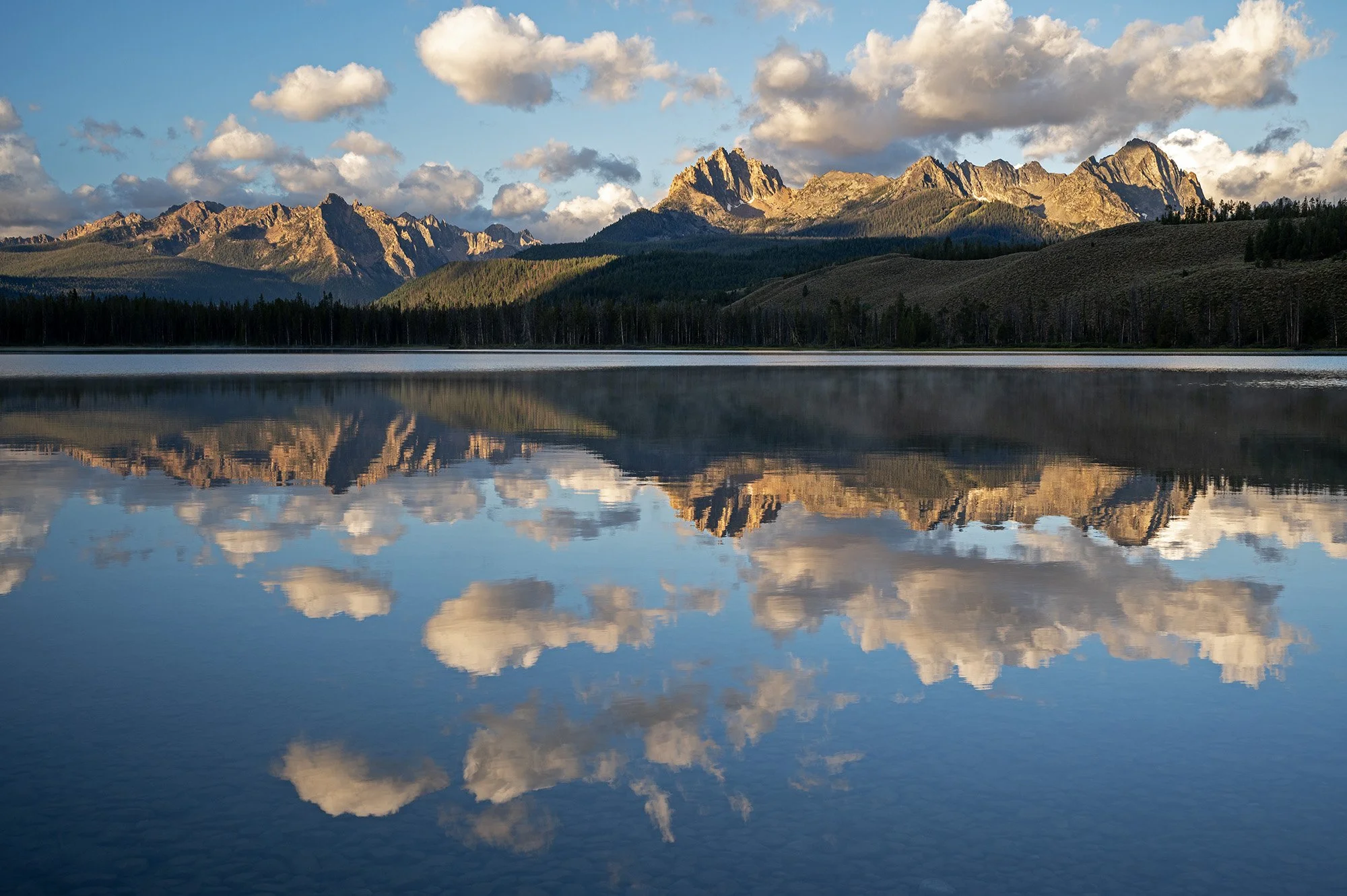A Hero's Journey
By Safina Center Fellow Amy Gulick
Russ Thurow (left), fisheries research scientist with the U.S. Forest Service, and Ed Cannady, retired recreation specialist with the U.S. Forest Service, at Marsh Creek, some of the best remaining habitat for the threatened Snake River Chinook salmon population. ©Amy Gulick
Slogging through chest-high grass in pelting rain, I struggle to stay upright on the soggy ground pocked with beaver holes. A dark veil of clouds obscures the surrounding mountain peaks. The temperatures are cooler than expected and I’m grateful for the extra layer of clothing I tossed on early this morning. The day’s climate may be a bit uncomfortable for me, but it’s perfect for salmon.
I catch up to Russ Thurow, a fisheries research scientist with the U.S. Forest Service, who is showing me around Marsh Creek in central Idaho. A tributary of the Middle Fork of the Salmon River, Marsh Creek contains some of the best remaining Chinook salmon habitat in the Snake River basin and in the entire contiguous United States. We speak in hushed voices as we approach the creek and Russ drops to his knees. I do the same and we both army crawl through the towering grass until we reach the creek bank. Russ motions for me to peer through the grass into the creek. In the clear flowing water I see her. A beautiful Chinook salmon near her redd, a nest she dug in the gravel to lay her eggs. Two fish-sized shadows dart nearby, males vying to fertilize the next generation of this highly threatened population. I wish the salmon well and retreat from the water’s edge.
“These fish are ecologically vital, and culturally and economically significant in Idaho,” says Russ. “But we don’t have a lot of time—the Snake River Chinook population is at high risk for extinction. If we lose these fish, there are no others on the planet that will replace them.”
We walk to another section of the creek looking for more fish and meet up with Ed Cannady, a retired recreation specialist with the U.S. Forest Service. Ed has spent his entire career in central Idaho with the rugged Sawtooth Mountains as his backdrop.
Sawtooth Mountains reflected in Little Redfish Lake, some of the best remaining habitat for the endangered Snake River sockeye population. ©Amy Gulick
“The female Chinook salmon you just saw was born in these very gravels,” says Ed. “She went 850 miles through eight dams and their slack water reservoirs to the Pacific Ocean, swam a 4,000-mile loop around the North Pacific three times, and found her way back to the mouth of the Columbia River. She then retraced her outbound route up an 850-mile avalanche of whitewater and those eight dams, gained 6,600 feet in elevation, and found her way back to her natal gravels to spawn. All to ensure there will be another generation of Middle Fork Salmon River Chinook.”
The migration of Pacific salmon is a hero’s journey. Every year, enough fish have to dodge the jaws and beaks of predators, and the hooks and nets of people to sustain their populations. They’ve survived Ice Ages, volcanic eruptions, droughts, fires, and floods. For thousands and thousands of years they’ve endured. Until now. The female Chinook I just witnessed is a rarity. There are not enough of her kind that can complete the journey. The biggest obstacle to their survival: eight massive walls of concrete—four hydroelectric dams on the Columbia River and four more on the lower Snake River. The science is clear: if the four dams on the lower Snake River are not removed, this Chinook population as well as the endangered Snake River sockeye population will go extinct. Russ says that if we do nothing now, then the fish will be gone in 20 years. The good news? For the first time since the 1970s when all four dams on the lower Snake River became operational, a window of opportunity to remove them exists today.
A hero’s journey needs heroes. If the Snake River Chinook and sockeye salmon have what they need—suitable natal grounds, a migration corridor, and a healthy estuary and ocean—they’ll keep on doing their heroic thing. What the fish need now are four less dams in their migration corridor. They also need human heroes to help them—people like Russ and Ed, decision makers who will do the right thing, and people like you who care about life on Earth.
“The salmon never quit,” says Russ. “We can’t either.”
Sign in Riggins, Idaho in support of dam removal in order to recover the Snake River Chinook and sockeye populations, both listed on the Endangered Species List. ©Amy Gulick
Be a hero for the Snake River salmon by supporting dam removal: https://www.wildsalmon.org/support-us/take-action/save-our-wild-salmon-action-alerts.html



